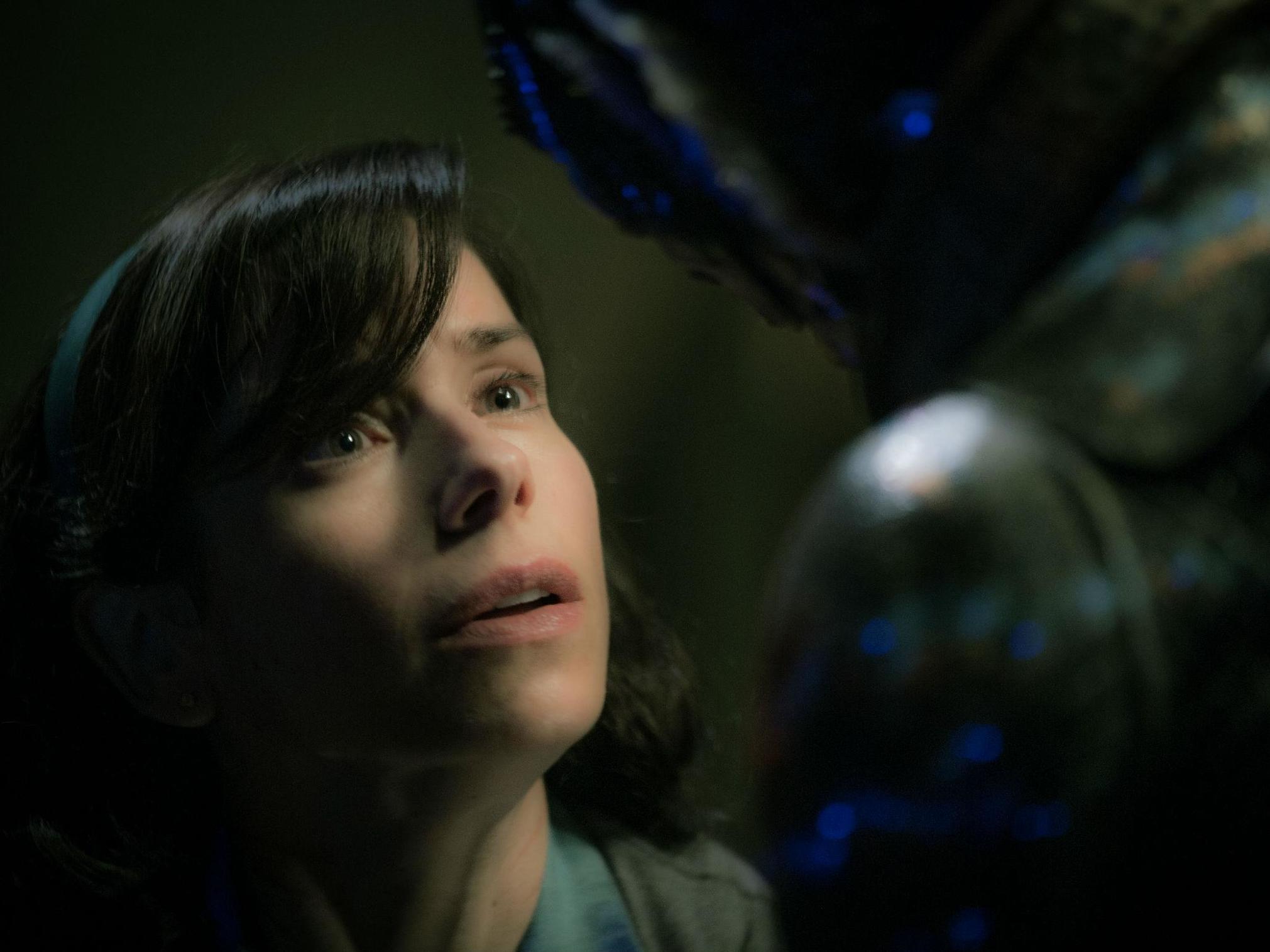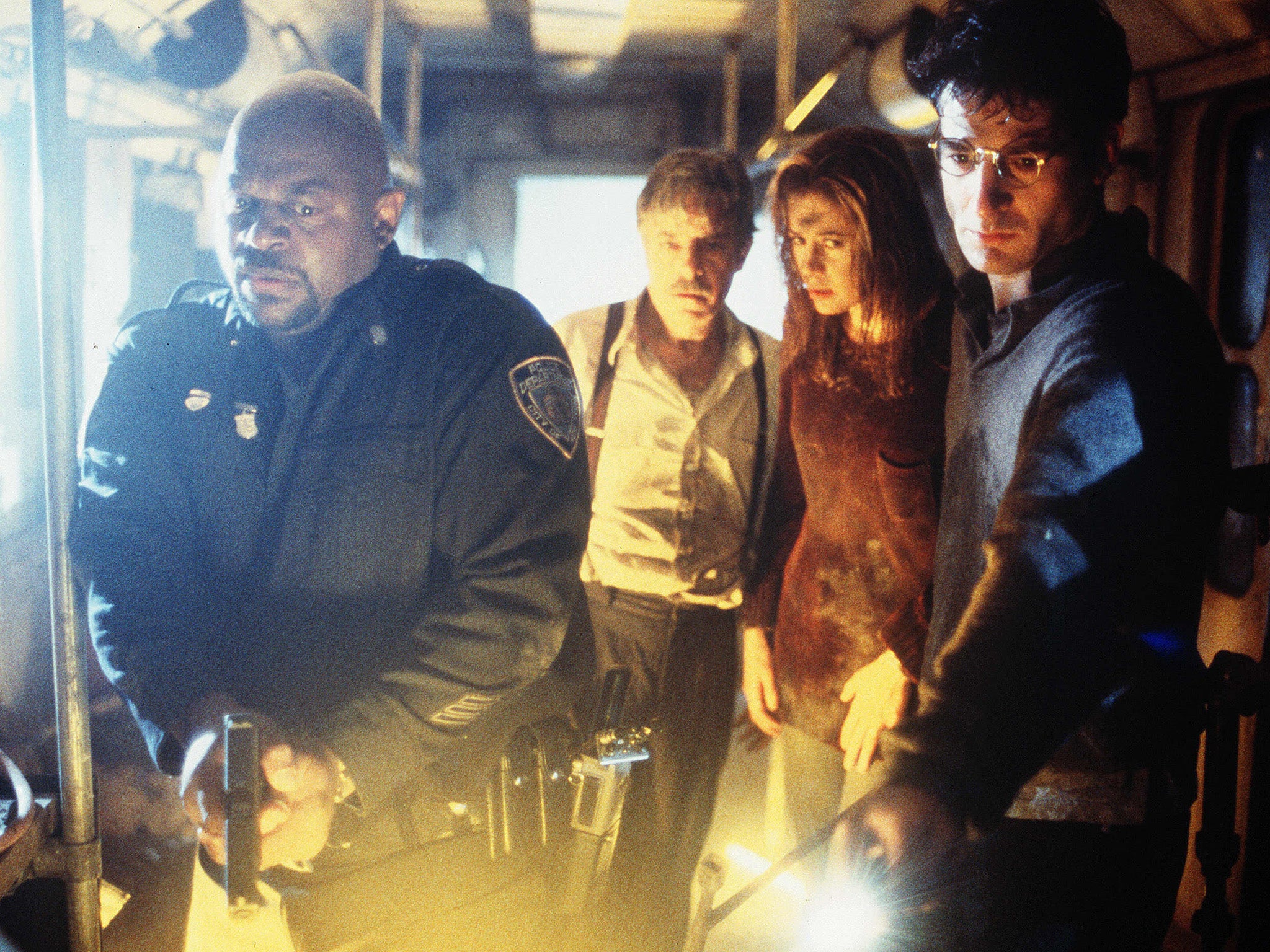Guillermo del Toro interview: 'I think adversity is good – that is very Catholic of me'
The Mexican director's filmmaking style in the Oscar-nominated, Golden Globe-winning ‘The Shape Of Water’ evolved as a direct result of horrible experiences 20 years ago with the Weinsteins on his Miramax-backed sci-fi movie ‘Mimic’

Your support helps us to tell the story
From reproductive rights to climate change to Big Tech, The Independent is on the ground when the story is developing. Whether it's investigating the financials of Elon Musk's pro-Trump PAC or producing our latest documentary, 'The A Word', which shines a light on the American women fighting for reproductive rights, we know how important it is to parse out the facts from the messaging.
At such a critical moment in US history, we need reporters on the ground. Your donation allows us to keep sending journalists to speak to both sides of the story.
The Independent is trusted by Americans across the entire political spectrum. And unlike many other quality news outlets, we choose not to lock Americans out of our reporting and analysis with paywalls. We believe quality journalism should be available to everyone, paid for by those who can afford it.
Your support makes all the difference.The press has been so full of stories recently about the alleged abusive behaviour of American producer Harvey Weinstein towards women that it is easy to forget he also had a reputation for bullying male filmmakers. They were often forced by Weinstein (nicknamed “Harvey Scissorhands”) and his brother, Bob, to make, remake, edit and re-edit films to the Weinsteins’ minutest specifications.
Guillermo del Toro’s Oscar-nominated, Golden Globe-winning The Shape Of Water boasts some wonderfully fluid cinematography: shots in which the camera glides through flooded apartments or roams through the underground corridors of the secret government laboratory where the mute heroine Elisa Esposito (Sally Hawkins) works as a cleaner. It turns out that Del Toro’s filmmaking style, with its very long takes, evolved as a direct result of the unhappy experiences he had 20 years ago with the Weinsteins on his Miramax-backed sci-fi movie Mimic, starring Mira Sorvino and Jeremy Northam.
The 53-year-old Mexican director has worked with many of the most powerful executives in Hollywood, but says that only once has he felt his creative freedom threatened.
“The only time I have experienced bad behaviour, and It remains one of the worst experiences of my life, was in 1997, when I did Mimic for Miramax,” Del Toro remembers. “It was a horrible, horrible, horrible experience.”

Del Toro is a Falstaffian figure, a larger-than-life polymath who loves movies, knows everything about them and can hold forth equally eloquently about horror pictures or animation. He has a very strong personal vision – and that is why it was such a struggle working with the Weinsteins on his New York-set yarn about deadly cockroaches.
“I was interfered with in plot, in casting, in the type of action. They second-guessed all the time. I never had a single day that was pleasant.”
Del Toro adds that this was not Harvey Weinstein’s doing but that of his brother, Bob, who oversaw Miramax’s genre label, Dimension.
In response to the gruelling experiences he endured on Mimic, Del Toro learned to shoot in a style that defies cutting and front-office interference. “I learned to make my camera more fluid, more a storytelling character; it really helped me develop the language that now I practice on The Shape Of Water. It taught me to edit every day because I was always expecting to be fired. I’ll have a cut of the movie six days after wrap. I think adversity is good... that is very Catholic of me.”

Like Orson Welles a generation ago, Del Toro can justly be called a one-man orchestra. He writes, directs and produces. His friend and mentor Jeffrey Katzenberg used him as a consultant/fixer on Kung Fu Panda 2 and Puss In Boots. He is as passionate about animation as he is about live action and he is an expert on make-up and visual effects. At any given times, he will have multiple different projects on the boil.

Watch Apple TV+ free for 7 days
New subscribers only. £8.99/mo. after free trial. Plan auto-renews until cancelled

Watch Apple TV+ free for 7 days
New subscribers only. £8.99/mo. after free trial. Plan auto-renews until cancelled
When Del Toro enjoyed his international breakthrough with 2006 fantasy Pan’s Labyrinth (billed as Alice In Wonderland for grown-ups), he challenged himself. “I said that in the next 10 years I am going to direct animation, direct a video game, write a novel and do a TV series. I wanted to learn every narrative aspect of the business.”
Of course, Del Toro hit all his targets. He wrote the novel (vampire yarn The Strain); he directed a number of TV series (Trollhunters among them); he designed the computer games (even if they were never produced) and he found time to take on plenty of other projects too.
The Shape Of Water brings many of Del Toro’s pet obsessions together. It is a fantasy horror piece with an obvious debt to Creature from the Black Lagoon but it is also a very tender love story. It’s typical of his subversive approach that the heroine (played with Chaplinesque grace and humour by Sally Hawkins) is no passive fairy princess. Early in the film, we see her masturbating in the bath – not something that Snow White or Cinderella ever got up to in Disney movies.

“When we were in pre-production. I gave her [Hawkins] a box with the entire Laurel and Hardy, the entire Buster Keaton, Harold Lloyd and Chaplin, and I said to her, study them because you’re basically a silent comedian,” Del Toro remembers. He first saw the British actress in TV drama, Fingersmith, in which she played a lesbian pickpocket in Victorian England. He also enjoyed her performance in Mike Leigh’s Happy Go Lucky. (“I thought she was radiant”) and realised that Hawkins could carry a movie in which she would be silent throughout.
As for what Hawkins does with her hand in the bath and her trysts with the very feral. lusty, cat-eating monster, Del Toro was determined not to make a film about a Disney princess. “I wanted her to cook eggs, shine her shoes, masturbate and then go to work. I thought it was important that there was that dimension to her. I didn’t want her to be a demure girl waiting for a prince to rescue her. I didn’t want to her to be a puritan princess who kisses a guy who turns into a dude.”
The Mexican has always embraced new media and storytelling styles but he still believes in the potency of cinema. “TV is long-arc. It is offering characters, plot and stories. Movies can offer vistas, images, moments that are larger than life. I adore TV and I do binge-watch, but with most of the series I love, I can quote you a moment, a line, a character gesture but I cannot quote you a single image that is memorable as an image in the way that the elevator is opening and the blood pouring in the corridor in The Shining or the space baby in 2001.”
TV and film, he concludes, are mediums catering to different needs. The former still can’t match the visual impact of the latter.

Del Toro is still trying to hatch his long gestating Pinocchio film. Another of his long-term goals is to make a film adaptation of Frankenstein – one that will be faithful to Mary Shelley’s novel. “As a kid, I saw the movie and I read the book and I thought, dear Lord, no one has made this. To this day, no one has made the book. Every Frankenstein adaptation goes off at a tangent.”
The one Frankenstein film that registers with him most strongly, albeit not a remotely faithful one, is the TV movie version from the 1970s starring James Mason, Leonard Whiting and Jane Seymour, and with Michael Sarrazin as the creature. This was written by Christopher Isherwood (of Goodbye To Berlin/Cabaret fame). “It was a beautiful, erudite, strange recreation of the myth of Frankenstein,” says Del Toro.
His Catholic upbringing has turned out to be very useful for his work as a director of horror fantasies. He talks about how, after the Spanish invaded Mexico, there was syncretism: Christian beliefs were blended with Pagan myths. “That’s what happens to me with monsters. There is a syncretism of Catholic dogma and the idea of sacrifice into a profane iconography, which is the monster. To me, the creature of Frankenstein is in may ways similar to a crucifixion – a martyr who dies for his sins.”
The Mexican director is no longer strictly a believer but, as he puts it, “once a Catholic, always a Catholic”.
As for his breakneck work schedule, that doesn’t exhaust him.
“The way I see it, a change is a break. Let’s say that you’re mowing the lawn and you take a break to read, then you are rested. If you take a break to eat, you’re not mowing the lawn, you’re not reading. That’s how I feel about doing these projects.” In other words, if he is working very hard on one film, the best way to escape it all and relax is to work on another, and to get some rest from the second one, to take on a third.
He adds, without a trace of self pity, that it helps his productivity that he currently has “zero social life”. The one regret he will admit to is not “putting more time” into his family. (He married Lorenza Newton, whom he had known since student days, in 1986 but, according to his IMDB entry, they were divorced last year.)
“It is the sign of youth that when you are a young man, you think your worth is work but, as you get older, you realise your worth is your worth. I wish I had realised that at 30,” he says, showing a hint of doubt about the toll that his prodigious career has taken on his private life.
‘The Shape Of Water’ is released on 14 February
Join our commenting forum
Join thought-provoking conversations, follow other Independent readers and see their replies
Comments